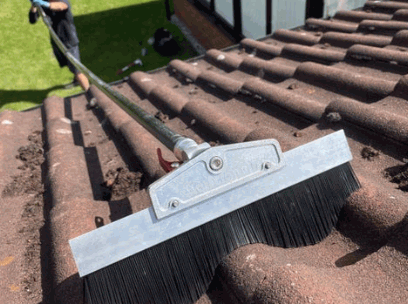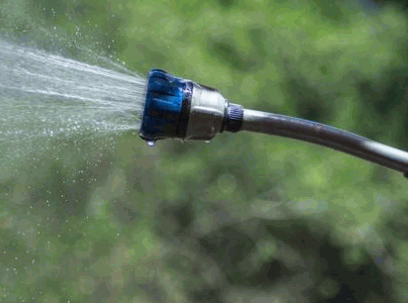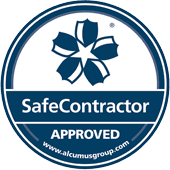Roof moss is a common issue in the UK. Our cool, damp weather creates the perfect breeding ground for moss to thrive, and it will often find itself on a rooftop. Left untreated, moss can cause roof damage, so it isn't simply an aesthetics issue. If you have a moss-covered roof, and you want to restore it, there are a variety of methods you can use.

Roof moss looks unsightly, but it isn't as harmless as it first appears. If left untreated for too long, it can even cause structural damage to your roof, and this is mainly due to water ingress.
Plants like moss hold onto water because they are so absorbent. If it has been especially rainy recently, this will mean that the roof shingles are in a constant state of dampness. The excess water will eventually degrade the roof materials. It can also block drainage, further trapping moisture on the roof.
In addition to this, the moss root-like structures (rhizoids) can dig into the gaps between the shingles, causing the roof tiles to lift. This allows water to enter the roof deck and r. Its excess weight will also put extra pressure on the shingles, increasing the chance of cracks and damage.
The winter months are a particularly problematic time for roof moss due to the freeze-thaw cycle. The water that the moss has absorbed will freeze and expand. This can force the asphalt shingles apart or widen any existing cracks. When the water thaws, it pours into these gaps, then freezes again, and the process restarts. Over time, this cycle can cause a surprising amount of damage.
Have a look at our post "How much does roof cleaning cost in London".

Removing moss is a task that many people take on as a DIY project, but it is worth noting that it is often better to use a professional cleaning company. Any job that involves working at height is dangerous, and should really be undertaken by someone with the proper training and equipment.
This should be stable and long enough to reach the roof safely.

This should be soft-bristled and long-handled.

You can use a shop-bought moss killer, which will be effective and killing the plant and preventing regrowth. Or you could make your own moss removal solution:
A baking soda solution works by changing the pH of the moss and inhibiting growth. Mix baking soda with water, apply, and leave time for it to work. This method doesn't kill the plant. Instead, it will prevent moss from regrowing, so it takes time to work.
Vinegar works in a similar way. Its acidity will prevent moss from growing, so it will disappear over time.
If you want a solution that you can use for directly killing roof moss, then a shop-bought chemical will be most effective.

The garden sprayer is used for even application of the moss remover, while the garden hose is used for rinsing.
A pressure washer can also be used for rinsing and mechanical removal of moss growth, but its high pressure makes the risk of shingle damage high. This method of roof cleaning should only be used by a professional with the experience to prevent damage.

Choosing the right day to remove moss can ensure the job's success and your safety. Check the weather forecast, and choose a dry but cloudy day. Wet moss can be very slippery so is a serious safety hazard.
A sunny day also isn't optimal because the moss remover you apply will evaporate too quickly to be effective.
Ensure you are wearing all the necessary personal protective equipment, and use a ladder stabiliser to keep it steady while you work. Avoid leaning the ladder against the gutters or roof edge.
Make sure that you know how to use your safety rope and harness and that it is correctly prepared.
Use the long-handled brush to remove any loose moss. Do this dry first, starting from the top and working down. This will reduce the chance of roof tiles lifting or getting damaged.
Gently scrub, avoiding using too much pressure. Remove as many layers of moss as possible.
Use the garden hose to rinse the roof and remove any residual loosened moss from your roof. You may need to go back in with the brush a second time.
This step can be enough for some people, and you don't have to move on to the next step and use a moss killer. If you do want to prevent regrowth, however, this is a sensible long-term solution.

If you are using a commercial solution, always carefully follow the manufacturer's directions. Most will require some dilution for safe handling.
For a baking soda solution, mix 150 grams of baking soda with 4.5 litres of water. For the vinegar solution, you can use equal parts vinegar and water.
Pour the solution into your garden sprayer, if you are using one. This is the easiest way of applying the solution. If you don't have a garden sprayer, you could use a watering can with a fine rose head or you could dip your long-handled brush into a bucket containing the solution, and apply it manually to the remaining moss.

Both commercial moss killers and DIY solutions will require time to work, and this can vary from 20 minutes to a few hours. This will depend on the manufacturer's instructions and the severity of the moss growth.
If you have used a moss killer, the remaining moss will be dead and will need to be removed. You can use your brush to remove it, using downward strokes. Or you could use a garden hose on a gentle setting. Start at the top, and gravity will help you to move the dead moss off the roof.
Again, you could use a pressure washer for this task, but that is best left to professionals because of the risk of damage to the roofing materials.

The moss you have removed from your roof now needs to be disposed of. Some of it will have collected in the gutters, and will need to be removed to allow them to function properly. Keeping gutters clean is vital for proper drainage.
Since moss is an organic growth, it would make a good addition to your compost heap. If you don't have a compost heap, you can usually dispose of it in your garden waste bin, but it may be worth checking with your local authority first.
Removing moss can be a time-consuming task, so taking steps to prevent it from coming back will mean you won't have to go through the removal process again for a longer time.
Moss thrives in shady areas, so if you have any overhanging trees or branches, trimming these back can help prevent moss from growing on your roof tiles.
You could also install zinc strips or copper strips along the roof ridge. When these metals oxidise in the rain, they release particles that can prevent moss from growing. Zinc particles trigger the moss to eat and drink repeatedly until it dies. Copper particles work by releasing ions that inhibit growth. These are both more environmentally friendly options than having to periodically use chemicals to remove moss, so can be a worthwhile investment.
Keeping your gutters clean and clear of debris prevents moisture from accumulating around the roof edges, which is where moss tends to thrive.
If you are dealing with moss growing on your roof, we can help. As a professional cleaning company, we use industry-standard techniques to remove moss, without damaging your roof. We pride ourselves on ensuring that all of our clients' homes are restored to their original beauty, and on preserving and maintaining the roof so that it reaches its expected lifespan.
Our highly-trained and experienced team of technicians is fully health and safety compliant, ensuring their safety when working at height.

Cleaning moss from your roof can be time-consuming, but it will prevent the moss from causing damage to your roof tiles or even the underlying roof structure. The moss can be removed with a stiff brush and a garden hose. To prevent it from coming back, moss killer is effective, as is taking preventative measures such as cutting back overhanging branches.
Since removing moss involves working on a roof, it is always a good idea to use a professional company for safety reasons. They will be trained in how to work at height with all of the necessary safety equipment and training.




